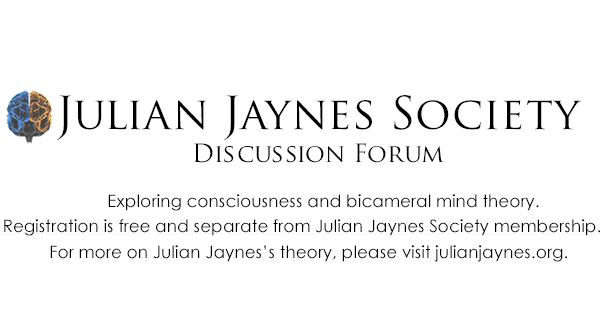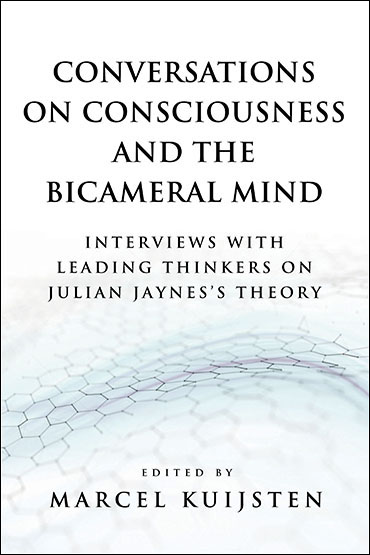A prevailing premise is that the origin of religion is a mystery in desperate need of explanation. Humans, after all, are inherently rational and logical, so why would they engage in something so irrational, illogical, and superstitious as religion? But it is the emergence of Enlightenment science and a secular mindset several hundred years ago that require an explanation. This is because, whether one subscribes to organized religion or militant atheism, we are all instinctively “religious” if broadly understood. At the most elemental level of the psyche dwells a spiritual impulse, which manifests itself in various ways. First, we are always seeking a relationship with something larger than ourselves. Arguably this is rooted in our socioaffiliative predisposition; being sophisticated primates prescribes us to feel out of sorts if we are not attached to, allied, or associated with “others,” however defined. Second, we ceaselessly search for meaning, whether in political ideology, psychology, the scientific study of nature, or aesthetic gratification (not to mention religion as conventionally defined, of course). Third, being primates attuned to the principle of dominance hierarchy, we look for reassuring authorization and guidance when making important decisions. And finally, we are smart enough to know our time in this world is limited, condemning us to wonder if death is final.
How has our deep-seated religious impulse expressed itself down through the centuries? And can common, overarching patterns be detected in the vast and overwhelming array of expressions of spirituality? Is there one worldwide religion with common characteristics and not just an assortment of specific religious traditions, specific to place and period?
Science progresses by finding patterns, order, and connections in what initially appears to be disordered, unrelated, and cluttered chaos. Consider comparative religious studies. Certainly, scholars have found some interesting commonalties among different places and periods. Nevertheless, modern religious studies, like other historical and social sciences, shies away from making large theoretical pronouncements, a trend that was more popular a century or so ago. This is not necessarily a bad thing, as all too often thinkers, in the rush to make sweeping generalizations, ignore important exceptions and miss the nuances of close-to-the-ground, granular research. But at the same time, we do not want to overlook what might be significant patterns in world religions.
Enter Julian Jaynes who argued that two major developments explain much about historical changes in religion: (1) what were interpreted as supernatural voices and visions were hallucinatory experiences that had evolved as a form of social control (i.e., bicamerality); and (2) before approximately 1200 BCE people lacked subjective introspectable self-awareness. Incorporating these developments into analyses of religious studies allows us to make sense of a host of erstwhile riddles and problems (the birth of religion; the prevalence of reports of divine visitations in ancient times; the common occurrence of encountering ancestral ghosts; spirit possession and frenzied prophesy; the ubiquity of oracles and associated practices; etc.). In other words, Jaynes’s ideas act as explanatory a common denominator for what superficially looks like disparate and unrelated phenomena.
Following Jaynes, I contend that where the textual and archaeological evidence permits, we can see an overall movement from a totalizing, super-religiosity to a relatively less intensive spirituality. Below I identify mega-trends that are historical and diachronic, rather than cross-cultural and synchronic. In other words, a discernible trajectory, with a major rupture about three millennia ago, delineates changes in religiosity. This break was a consequence of the breakdown of a mentality in which hallucinatory experiences, understood as divinely-inspired, took the place of conscious volitions.
Philosophical Religion
During the period of intensive religiosity, the gods were visible and close-by (whether through effigies treated as if they were alive or theophanic visitations). But as the double psychology of supervisory entity and subordinate being broke down, divinities became invisible and remote, and moved to a place beyond human comprehension. In early times the relation between gods and mortals was transactional and conditional, i.e., divine powers expected sacrifices and worship before they would deliver boons, guidance, and oracles. But the philosophical turn during the mid-first millennium BCE modified this quid pro quo dynamic. Some traditions began to teach that divine compassion for mortals was forthcoming despite the imperfections and frailty that are inherent to the human condition; God’s acceptance became unconditional.
During preconscious, super-religious times, doubt or disbelief in numina was impossible. Unwavering conviction and unquestioning certainty about the existence of the gods was the order of the day. So strong was this credence that across cultures polytheistic universalism prevailed. In other words, it was assumed that all gods, no matter their provenance, deserve acknowledgment, acceptance, and worship (accommodating foreign gods is also called pantheologism). But the loss of voices and visions led to suspicious skepticism, existentialist doubt, and the questioning of one’s own belief and that of others. The emergence of proselytizing faiths, premised on the interesting psychology of “conversion,” was another consequence of a shift in mentality.
Another change in thinking was the relation between divinity and this world. A preconscious intensive religiosity saw the gods as immanent in the earthly realm, and powerful, supernatural beings were still subject to cosmic laws. But eventually, as abstract cognition led to a more philosophical religiosity, divinity became transcendent, i.e., the Godhead was conceived as existing beyond the phenomenal world, standing outside of and above nature. Moreover, the nature of the gods themselves changed. In bicameral times they were anthropomorphic, but increasingly they became mysterious, extra-mundane, other-worldly beings. In preconscious cosmogonic accounts the gods used cosmic stuff to create the world. But more philosophically-oriented belief systems saw gods willing into existence the world ex nihilo. In preconscious religion, since the gods were in and of the world, the divine, earthly, and natural realms overlapped, while in postbicameral times different spheres of existence were more clearly segregated and a creator deity was positioned separate from the natural order.
How societies organized themselves vis-à-vis otherworldly spiritual powers also followed a predictable path. Polities developed from god-governed thearchies, to theocracies (ruled by divinely-deputized rulers or sacred kings), and then to large-scale multiregional empires that, while still beholden to the deities, nevertheless exhibited signs of secularism.
As the gods lost their hold in this world, understandings of nature also changed. In a theocentric worldview it was assumed that nature itself is infused with spiritual forces (animism) and it was viewed as possessing anthropomorphic, human-like features. But as the gods retreated to the heavens, nature became disenchanted and inanimate, lacking agentive properties (de-anthropomorphized; this process, continuing with the Enlightenment science, was not complete until probably the eighteenth century). A preconscious mentality limited the hypothetical manipulation of knowledge, whose concrete quality made it something to be collected, classified, and catalogued, while important knowledge was revealed by the gods. A conscious mentality facilitated more abstract reasoning, speculation, and an emerging protoscience by the mid-first millennium BCE; this encouraged some to doubt the very existence of the gods or at least seriously question their nature.
As the consciously interiorized universe of the individual expanded, to the cosmic realms of the macrocosm and microcosm was added a new spatiality, the introcosm. Along with changes in space came new concepts of time, which became linearized. This unfurling of temporality in an imaginary straight line was made possible by spatialization i.e., it became possible to visualize an unfolding timeline within one’s psychoscape. Time could move like an arrow and was no longer just cyclical. People began to escape the dictates of the rhythms of agriculture as the gods became less nature-oriented. Changes in temporal conceptions are also evident in how the purpose of writing evolved. The first texts were decidedly theocentric. Hymns, prayers, wisdom literature, administrative records, and inventories to aid the priests who ran the temples predominated. The newly-emergent cognitive ability of conscious narratization is apparent in the development of king lists, royal annals, and chronicles to the first “histories” (Hecataeus, Thucydides, Herodotus). Eventually, literature became less theocentric, demonstrated by complex epics peopled by complicated characters and a more linearized structure that reflected changes in the spatialization of time.
Historical Patterns in World Religions: A Jaynesian Perspective
Posts by anthropologist, mental health counselor, and author Brian J. McVeigh on Julian Jaynes's theory and related topics.
Return to “Brian J. McVeigh's Random Thoughts”
Jump to
- JJS Forum
- ↳ General Discussion
- ↳ News Items Related to Jaynes's Theory
- ↳ Book Discussion: The Origin of Consciousness and Julian Jaynes Society Publications
- ↳ Myths, Misconceptions, and Fact Checks About Julian Jaynes's Theory
- ↳ Brian J. McVeigh's Random Thoughts
- ↳ Julian Jaynes
- ↳ Conferences, Events, and Local Discussion Groups
- ↳ Lecture Discussion
- ↳ Interview and Q&A Discussion
- ↳ 1.0. Hypothesis One: Consciousness Based On Language
- ↳ 1.01. Hypothesis One: Consciousness Based On Language | Subtopic: Consciousness & Dreams
- ↳ 1.02. Hypothesis One: Consciousness Based On Language | Subtopic: Consciousness in Children
- ↳ 1.03. Hypothesis One: Consciousness Based On Language | Subtopic: Consciousness and AI
- ↳ 2.0. Hypothesis Two: The Bicameral Mind
- ↳ 2.1. Hypothesis Two: The Bicameral Mind | Subtopic: Auditory Hallucinations in Normal Adults
- ↳ 2.2. Hypothesis Two: The Bicameral Mind | Subtopic: Hallucinations & Imaginary Companions in Children
- ↳ 2.3. Hypothesis Two: The Bicameral Mind | Subtopic: Hypnosis, Possession & Altered States of Consciousness
- ↳ 2.4. Hypothesis Two: The Bicameral Mind | Subtopic: Religion & the Bicameral Mind
- ↳ 2.5. Hypothesis Two: The Bicameral Mind | Subtopic: Schizophrenia
- ↳ 2.6. Hypothesis Two: The Bicameral Mind | Subtopic: The Mentality of Pre-Literate & Pre-Modern Peoples
- ↳ 3.0. Hypothesis Three: Dating the Development of Consciousness
- ↳ 4.0. Hypothesis Four: Jaynes's Neurological Model for the Bicameral Mind
- ↳ The Bicameral Mind in Fiction, Film & Popular Culture
- ↳ Information for Students


